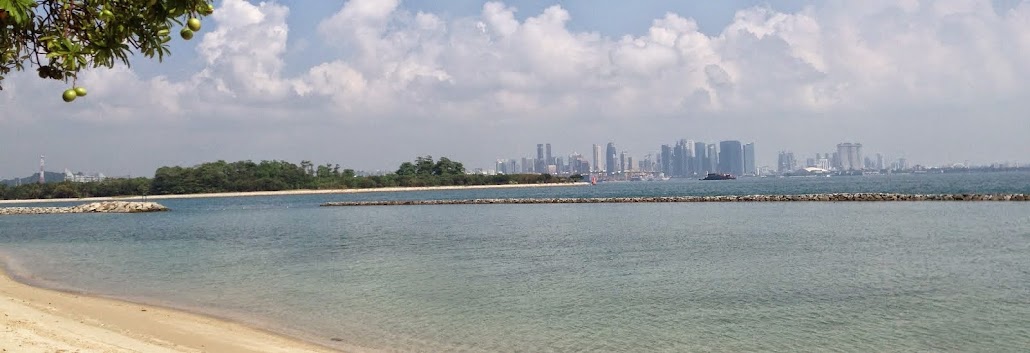 |
| Facing the Mangroves |
Mangrove forests and urban development can hardly co-exist. In the 1820s, mangrove forest made up of about 13% of the total land area. In the 1990s, it was down to about 0.5%. (1)
Mangrove forests can now be found in small patches around the north and northeast of Singapore, and on islands such as Pulau Ubin, Pulau Tekong and Pulau Semakau. (1)
The biggest mangrove forest is the 130-hactre Sungei Buloh Wetland Reserve. (2)
There are great positives in maintaining these Mangrove forest. For Sungei Buloh, it is listed as a forest that sees a good level of biodiversity - birds, fishes, etc. The mangrove also help to stabilize the land closest to the sea. (3)
| Source: National Archives of Singapore |
The Orang Laut (People of the Sea) in Singapore such as the Orang Seletar and Orang Galang would have been closely acquainted to the mangrove forest as they made the river mouths their home. This was where they would get their fishes, fruits and timber. (4)
I had hoped that I could get a taste of what being an Orang Laut is like when I headed north to the town of Kukup, Malaysia.
The flight distance from Tuas to Pulau Kukup is 26 kilometres (KM), and a driving distance of 69KM. So it's pretty close to Singapore. To get to Pulau Kukup, you must first set off from Kukup town. It is about 10 minutes boat ride before reaching the island's jetty. An entrance fee was required (RM10) and after which, you can enjoy the serenity of the mangrove forest.
 |
| Pulau Kukup Jetty |
The development of the island serves as a boon for visitors. Modernity brings to us boardwalk, bridges and watch towers where one can observe nature up close without needing to get one's feet dirtied.
We were greeted by monkeys. These 'residents' of Pulau Kukup were curious of our presence. As the day we visited the island was a weekday, only my colleagues and I were there.
We arrived at our first climb - a suspension bridge. The "one-lane" bridge hung over Sungai Ular or snake river, one of the five rivers that meanders inwards through the island.
 |
| The bridge is wide enough for only one person to pass |
In truth, the entire island was pretty huge and we had seen only a stretch of Sungai Ular. That afternoon, the water was coffee brown and everything looked still.
 |
| View of Sungai Ular |
Moving further inland, the ground turned muddy. Inversely, such muddy grounds are appreciated by mud skippers and snails. This is the world as it was when the Orang Lauts ruled the rivers. What I love about this weekday trip is the tranquility of the island and all i heard were noises from animals and the rustling of leaves!
Reference:
 |
| The snails were seen in many locations at Pulau Kukup |
Reference:
1. http://mangrove.nus.edu.sg/guidebooks/text/1003.htm
2. http://www.nparks.gov.sg/cms/docs/Sungei_Buloh_Wetland_Reserve_eGuide_LRes.pdf
3. http://wwf.panda.org/about_our_earth/blue_planet/coasts/mangroves/mangrove_importance/
4. Florida Museum of Natural History. (Retrieved on June 29, 2014). http://www.flmnh.ufl.edu/fish/southflorida/mangrove/importance.html

No comments:
Post a Comment